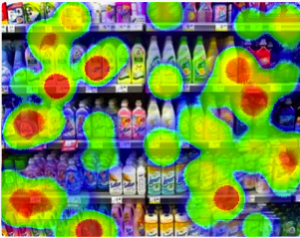Marketing in 3D
By Jerry Rackley
In 1884, English Schoolmaster Edwin A. Abbott wrote a book entitled Flatland: A Romance of Many Dimensions. The characters in the book live in a two-dimensional world called Flatland, and have trouble comprehending a world with three dimensions until they experience it for themselves.
Abbott’s enduring work has application still, as we try to absorb the onslaught of 3D technology that increasingly influences how we live and work. Of course there are 3D movies, which really aren’t new, but the technology has evolved significantly and we’re increasingly going to the cinema to see blockbusters in 3D. There is also 3D television, which isn’t yet enjoying the widespread adoption the manufacturers would like to see, but probably will as prices come down. The video games we play have also evolved to 3D by virtue of the controllers that now sense our movements.
Let’s consider those controllers, because the technology in them is about to carry us flatland marketers into the world of 3D. A company called PrimeSense builds the sensors inside Microsoft’s Kinect for the Xbox. Another company, Shopperception, is using those sensors to understand shopping behavior at a whole new level. Some NPR coverage of the recent Consumer Electronics Show brought this unique analytics solution to my attention.
 If I understand what Shopperception is doing, they use these 3D sensors in retail store aisles to gather detailed analytics. As a shopper reaches for an item on the shelf, Shopperception can identify the exact item, in real time, allowing the retailer to send a message to the shopper’s mobile device that might say: “we have a similar item on sale – would you like to try it?” or “here’s a coupon to use on your next purchase.” Then there is what I would call a store shelf heat map created with data captured by the 3D sensors. Imagine a photo of your retail display with hot spots overlaid on the shelf or display where consumers are reaching for products.
If I understand what Shopperception is doing, they use these 3D sensors in retail store aisles to gather detailed analytics. As a shopper reaches for an item on the shelf, Shopperception can identify the exact item, in real time, allowing the retailer to send a message to the shopper’s mobile device that might say: “we have a similar item on sale – would you like to try it?” or “here’s a coupon to use on your next purchase.” Then there is what I would call a store shelf heat map created with data captured by the 3D sensors. Imagine a photo of your retail display with hot spots overlaid on the shelf or display where consumers are reaching for products.
My mind is just beginning to appreciate the implications and value of this kind of data. In setting where customers are evaluating competing offerings, this kind of information can enable marketing precision on a level only dreamed of. We can know in a short period of time the impact of marketing decisions like pricing, packaging and shelf position with much more accuracy. This technology can do more, like turn a flat surface into a touch screen interface: you could project a poll on the floor in front of a display testing why a consumer made a product choice, just seconds after they made it. These 3D sensors provide information and interaction with consumers at the point of purchase in a way not previously possible. This technology is a new weapon in the marketer’s arsenal, a new way to gain a competitive advantage.
Because we’re marketers, we also have to ask how our customers might feel about the information gathered in this way. Will consumers value the real-time receipt of a text with a product coupon, or will they feel victims stalked by over zealous suitors? There is clearly great opportunity for marketers, but it’s not without some risk. With this newest of bleeding edge technologies, its important for marketers who want to use it to first communicate how it helps customers. Failing to do so will only create resistance and a backlash against a technology approach that can benefit everyone in the value chain.
This innovation, like others before it, will go through a cycle of early adoption, crossing the chasm (likely for this innovation) before going mainstream. I don’t think we’ll have to wait long for leading retailers to selectively deploy this technology, and then widely deploy it. As marketers, we’ll clearly benefit from what this technology can tell us. The question for us is, will we lead or follow?


